1. Hafezi F, Kanellopoulos J, Wiltfang R, Seiler T.Corneal collagen crosslinking with riboflavin and ultraviolet A to treat induced keratectasia after laser in situ keratomileusis. J Cataract Refract Surg. 2007; 33:2035–40.

2. Wollensak G, Spoerl E, Seiler T.Riboflavin/ultraviolet-a-induced collagen crosslinking for the treatment of keratoconus. Am J Ophthalmol. 2003; 135:620–7.

3. Tomkins O, Garzozi HJ.Collagen cross-linking: Strengthening the unstable cornea. Clin Ophthalmol. 2008; 2:863–7.

4. Hersh PS, Greenstein SA, Fry KL.Corneal collagen crosslinking for keratoconus and corneal ectasia: One-year results. J Cataract Refract Surg. 2011; 37:149–60.

5. Greenstein SA, Fry KL, Hersh PS.Corneal topography indices after corneal collagen crosslinking for keratoconus and corneal ectasia: one-year results. J Cataract Refract Surg. 2011; 37:1282–90.

6. Caporossi A, Baiocchi S, Mazzotta C, et al. Parasurgical therapy for keratoconus by riboflavin-ultraviolet type A rays induced cross-linking of corneal collagen: preliminary refractive results in an Italian study. J Cataract Refract Surg. 2006; 32:837–45.
7. Lee P, Jin KH.Clinical results of riboflavin and ultravioletA-Induced corneal cross-linking for progressive keratoconus in Korean patients. J Korean Ophthalmol Soc. 2011; 52:23–8.

8. Maeda N, Klyce SD, Smolek MK.Comparison of methods for detecting keratoconus using videokeratography. Arch Ophthalmol. 1995; 113:870–4.

9. Wittig-Silva C, Whiting M, Lamoureux E, et al. A randomized controlled trial of corneal collagen cross-linking in progressive keratoconus: preliminary results. J Refract Surg. 2008; 24:S720–5.

10. Vinciguerra P, Albé E, Trazza S, et al. Refractive, topographic, tomographic, and aberrometric analysis of keratoconic eyes undergoing corneal cross-linking. Ophthalmology. 2009; 116:369–78.

11. Andreassen TT, Simonsen AH, Oxlund H.Biomechanical properties of keratoconus and normal corneas. Exp Eye Res. 1980; 31:435–41.

12. Rabinowitz YS.Keratoconus. Surv Ophthalmol. 1998; 42:297–319.

13. Daxer A, Fratzl P.Collagen fibril orientation in the human corneal stroma and its implication in keratoconus. Invest Ophthalmol Vis Sci. 1997; 38:121–9.
14. Boote C, Dennis S, Huang Y, et al. Lamellar orientation in human cornea in relation to mechanical properties. J Struct Biol. 2005; 149:1–6.

15. Polack FM.Contributions of electron microscopy to the study of corneal pathology. Surv Ophthalmol. 1976; 20:375–414.

16. Meek KM, Tuft SJ, Huang Y, et al. Changes in collagen orientation and distribution in keratoconus corneas. Invest Ophthalmol Vis Sci. 2005; 46:1948–56.

17. Tu KL, Aslanides IM.Orbscan II anterior elevation changes following corneal collagen cross-linking treatment for keratoconus. J Refract Surg. 2009; 25:715–22.

18. Spoerl E, Mrochen M, Sliney D, et al. Safety of UVA-riboflavin cross-linking of the cornea. Cornea. 2007; 26:385–9.

19. Bottós KM, Dreyfuss JL, Regatieri CV, et al. Immunofluorescence confocal microscopy of porcine corneas following collagen cross-linking treatment with riboflavin and ultraviolet A. J Refract Surg. 2008; 24:S715–9.

20. Kohlhaas M, Spoerl E, Schilde T, et al. Biomechanical evidence of the distribution of cross-links in corneas treated with riboflavin and ultraviolet A light. J Cataract Refract Surg. 2006; 32:279–83.
21. Mazzotta C, Traversi C, Baiocchi S, et al. Corneal healing after riboflavin ultraviolet-A collagen cross-linking determined by confocal laser scanning microscopy in vivo: early and late modifications. Am J Ophthalmol. 2008; 146:527–33.

22. Kymionis G, Portaliou D.Corneal crosslinking with riboflavin and UVA for the treatment of keratoconus. J Cataract Refract Surg. 2007; 33:1143–4.

23. Patel S, Marshall J, Fitzke FW. 3rd. Model for deriving the optical performance of the myopic eye corrected with an intracorneal ring. J Refract Surg. 1995; 11:248–52.
24. Piñero DP, Alio JL, Barraquer RI, Michael R.Corneal bio-mechanical changes after intracorneal ring segment implantation in keratoconus. Cornea. 2012; 31:491–9.

25. Koller T, Mrochen M, Seiler T.Complication and failure rates after corneal crosslinking. J Cataract Refract Surg. 2009; 35:1358–62.

26. Caporossi A, Mazzotta C, Baiocchi S, Caporossi T.Long-term results of riboflavin ultraviolet a corneal collagen cross-linking for keratoconus in Italy : the Siena eye cross study. Am J Ophthalmol. 2010; 149:585–93.
27. Greenstein SA, Shah VP, Fry KL, Hersh PS.Corneal thickness changes after corneal collagen crosslinking for keratoconus and corneal ectasia: one-year results. J Cataract Refract Surg. 2011; 37:691–700.

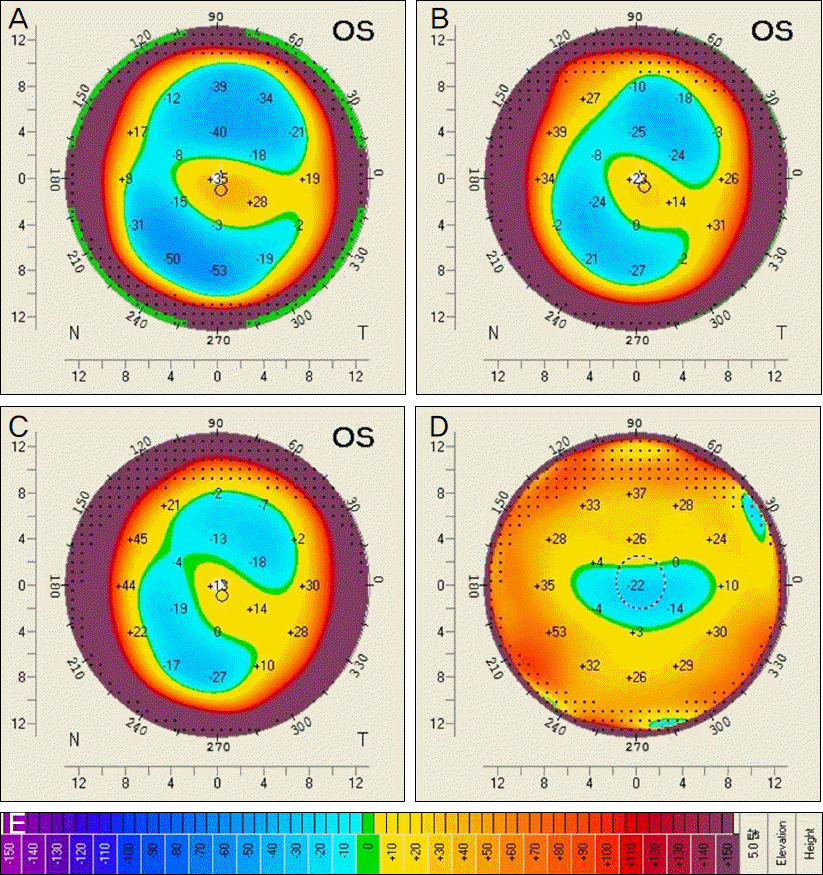
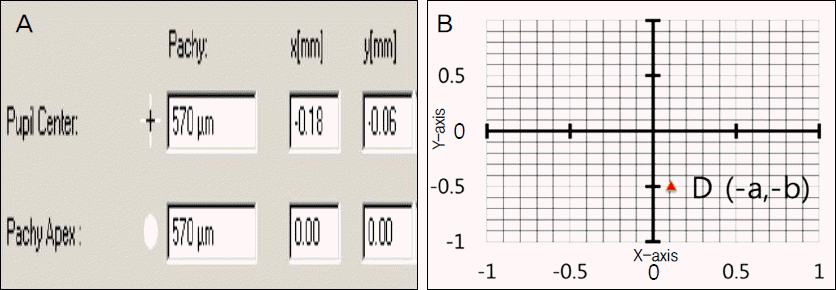
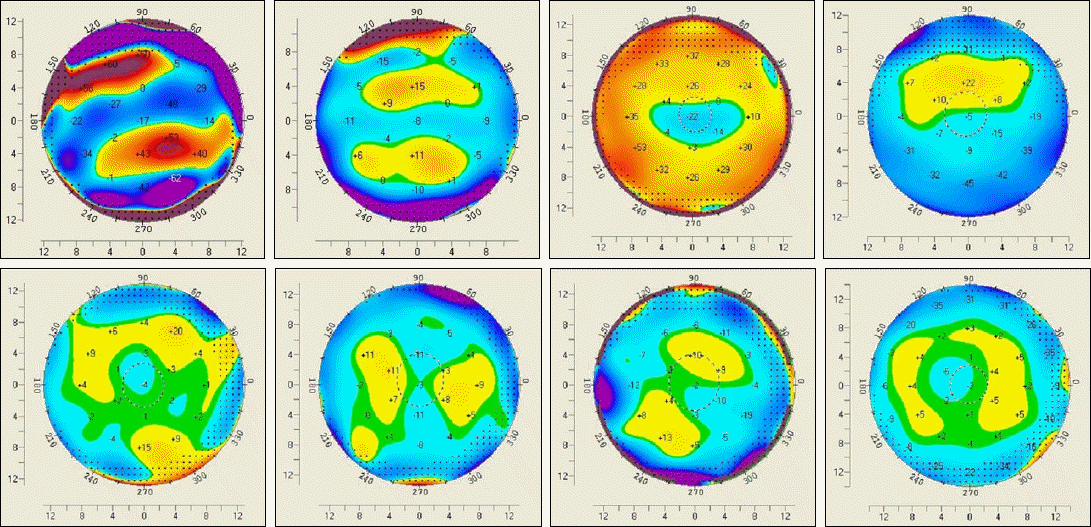
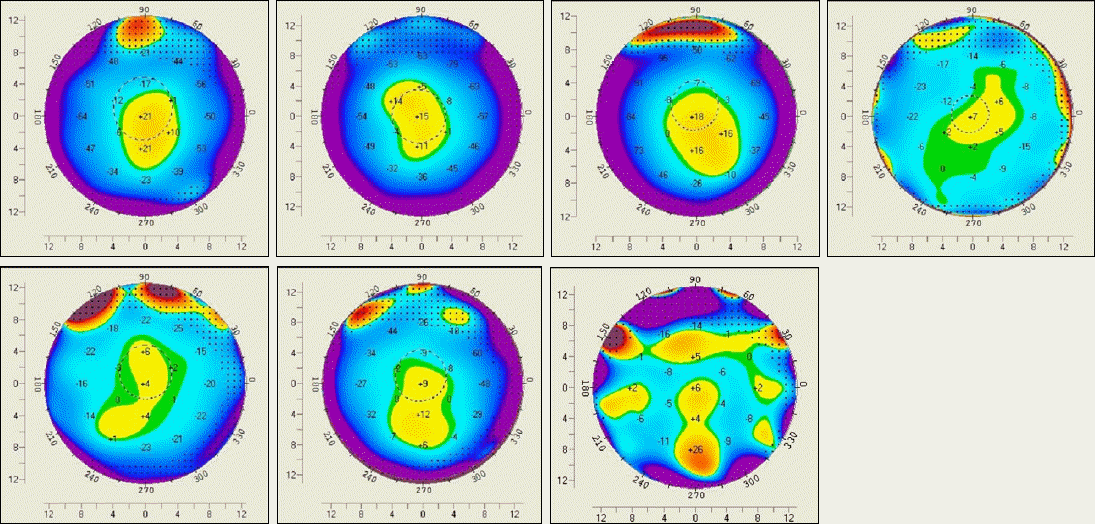

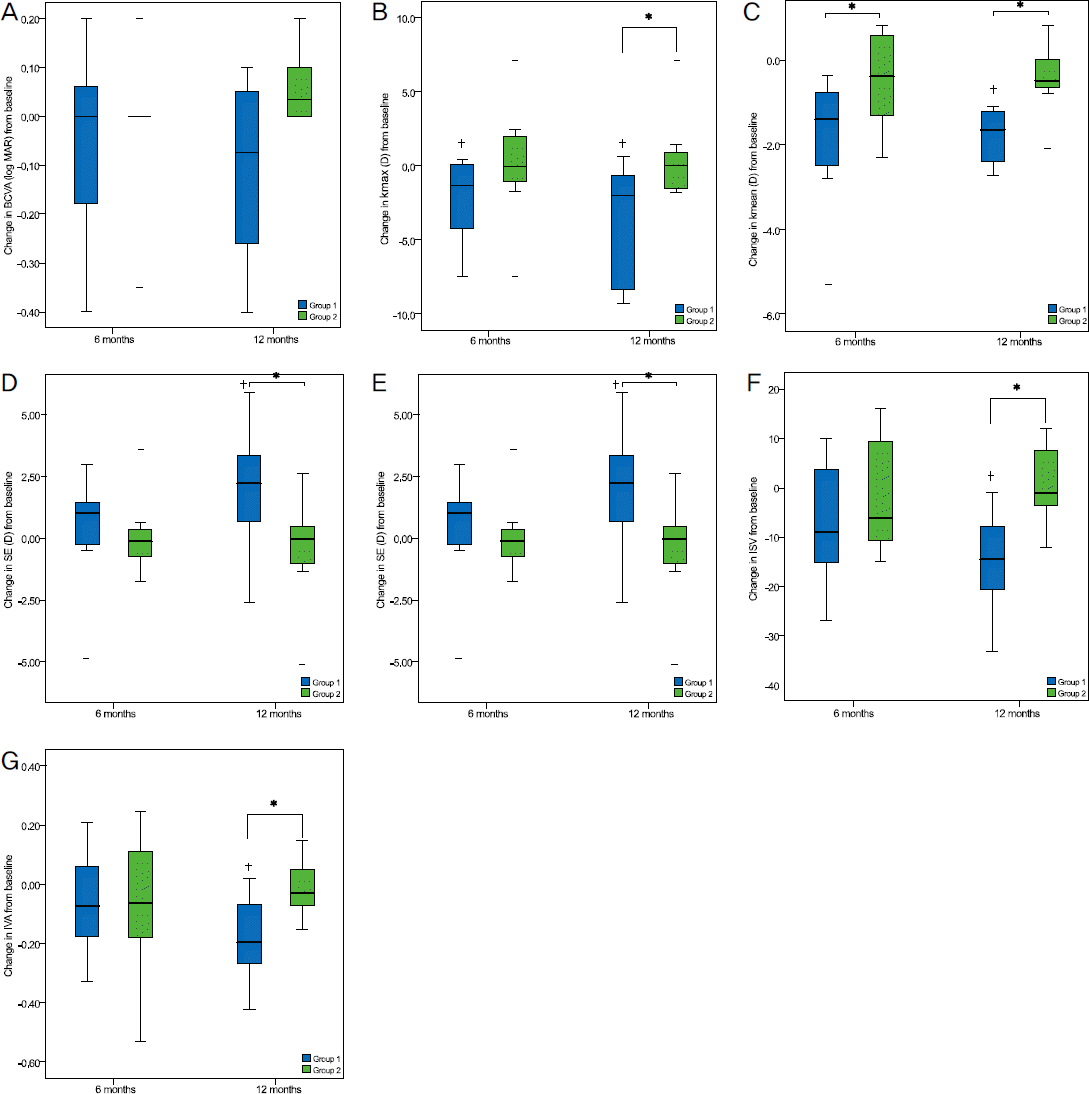
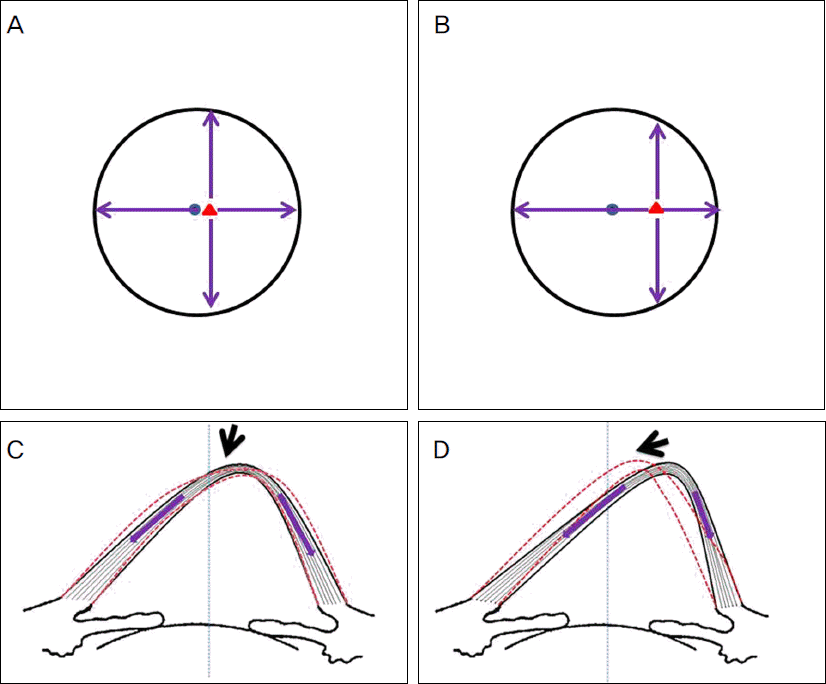




 PDF
PDF ePub
ePub Citation
Citation Print
Print


 XML Download
XML Download